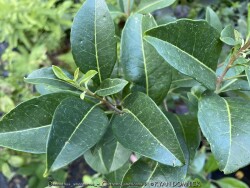
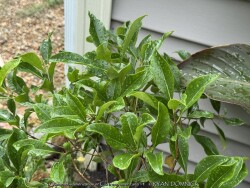
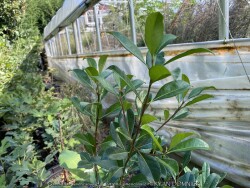
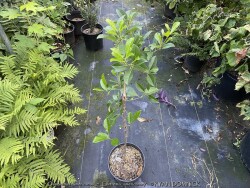
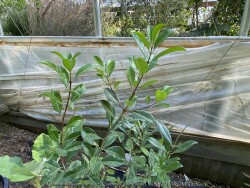
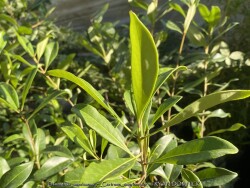
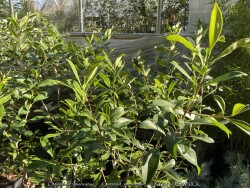
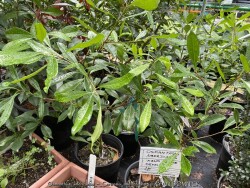
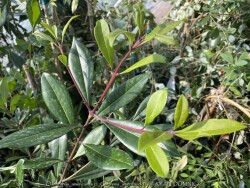
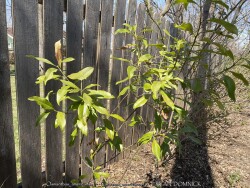
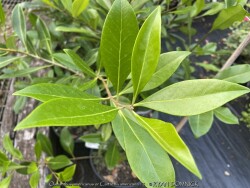
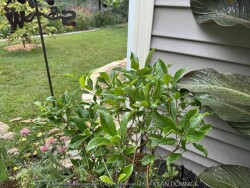
Plant Min Zone: 5b
Plant Max Zone: 9a
Sunlight: Full Sun, Part Sun, Shade
Water / Rainfall: Average
Soil Quality: Rich
Bloom Season: Spring
Flower Color: Cream
Berry / Fruit Color: Bluish Black
Spring Foliage Color: Green
Summer Foliage Color: Dark Green
Fall Foliage Color: Yellowish Green
Evergreen Foliage: Yes
Winter Interest: Yes
Scented Flowers: Yes
Drought Tolerance: Medium
Wet-Feet Tolerance: Medium
Humidity Tolerance: Medium, High
Wind Tolerance: Medium
Poor Soil Tolerance: Clay Soils
Height: 5' - 10'
Width: 8' - 12'
Growth Rate: Slow
Service Life: Extremely long: over 20 years
Maintenance Need: Low
Spreading Potential: Low
Yearly Trimming Tips: Trim Evergreen Shrub Yearly in Spring or Summer to Desired Size: Not Grown for Flowers or Fruit.
Plant Grouping Size: Specimen Planting of 1-3, Small Grouping of 3-5
Best Side of House: South Exposure, West Exposure, East Exposure
Extreme Planting Locations: Tolerates Extreme Heat, Base of Retaining Wall Locations
Ornamental Features: Long Lasting Fall Color, Bright Winter Color, Exceptional / Colorful Foliage
Special Landscape Uses: None
Possible Pest Problems: None
Plant Limitations: Needs Regular Irrigation, Slow to Reach Mature Size, Needs Thick Winter Mulch
Shippable in 2026: YES
Devilwood (Osmanthus americanus / Cartrema americana) has very hard and dense wood, hence the name. It is a slow-growing evergreen shrub or small tree native to southeastern North America and Mexico. Bright green simple leaves emerge in spring turning deeper green in summer. Cream white flowers borne on separate trees and female trees produce abundant blue/black fruit. Growth habit is somewhat open so don't count on it to provide screening or density. Grows in sun or shade but in the northern part of its range, growth is too slow and sparse in the shade. Devilwood grows in most soils including moist ones and occasional flooding. This making it an ideal rain garden plant. Becoming more drought tolerant when established, our 40 inches of typical rainfall in Eastern Kansas is sufficient if planted in good soils. The cold hardiness is surprising: as a zone 5, this could be one of the most cold-tolerant broadleaf evergreens trees available! It survived -16 degrees F and a week of single digit highs in February, 2021 with no damage. It even maintains bright green foliage in winter opposed to a dingy brownish-green like some evergreens. Useful in the garden as a background evergreen shrub or small tree. Sold as Osmanthus americanus, Cartrema americana is technically it's new botanical name.